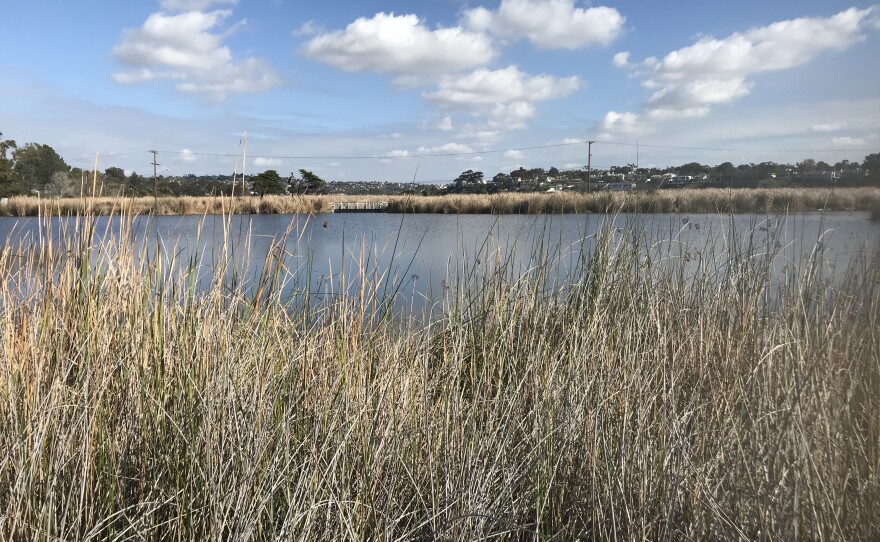The San Diego Association of Governments is taking an extra month to consider public input on the long-running effort to restore the Buena Vista Lagoon.
The lagoon sits between Oceanside and Carlsbad.
It is slowly being choked by sediment and cattails. The tall grass thrives there because the ocean is kept at bay by a low wall built by homeowners.
Gabriela Torres represents a group of homeowners that want SANDAG to do what they believe should’ve been done for decades: Dredge the lagoon and clean out the cattails to cut back on thriving mosquito populations.
“The mosquitos wouldn’t be as prevalent if the cattails would be cut back, so now we’re trying to fix decades and decades of a problem that we sort of let get out of hand,” said Torres.
The homeowners argue the 220-acre coastal lagoon and ecological reserve has a long history as a freshwater lake, but they say the SANDAG environmental impact report doesn’t share that conclusion.
“What the EIR hasn’t addressed is what is its natural state. We’ve introduced evidence that says it has been historically fresh water but the EIR says, 'Well, there’s times when it has been and times when it hasn’t been.' And I think that question is what needs to be answered specifically, because that is environmentally significant to know that before we can move on,” Torres said.
The project is in SANDAG’s hands because the California Department of Fish and Wildlife failed to come up with a solution after years of planning.
Steve Rodrick works at the Audubon Society’s Buena Vista Nature center on the north edge of the lagoon.
He backs opening the waterway to the ocean because he says that’s how the rest of San Diego county’s coastal lagoons work.
“A lagoon may form to be fresh water naturally. It only would last a short time. Storms and the natural geological reality of these estuaries mean that the ocean is going to break them open again and they will become brackish within a reasonable amount of time,” Rodrick said.
Opening the lagoon to the ocean or keeping it closed are two options being considered by SANDAG.
The freshwater option could cost tens of millions of dollars with ongoing dredging expenses.
The saltwater option costs more upfront but requires less ongoing maintenance.
SANDAG could also decide to create a hybrid lagoon with water, east of the I-5, staying fresh and water west of the freeway becoming brackish. Or they could do nothing.
Rodrick welcomes the return of a saltwater lagoon because it creates coastal habitat for migrating birds.
“The major change to a brackish lagoon would be the elimination of all the cattails. That would be number one. And the elimination of the cattails will provide us also with way fewer mosquitos,” Rodrick said.
Tidal flows will change the land around the lagoon if the wall that’s been there for decades is removed. The wall helps keep water levels constant, like a lake. The ocean pushes water levels up and down and that could impact waterfront properties.
SANDAG was poised to pick one of the alternatives Friday, but postponed that decision for a month after a flood of last-minute public comments.
A SANDAG official told KPBS they want to make sure to incorporate those remarks before moving forward.






